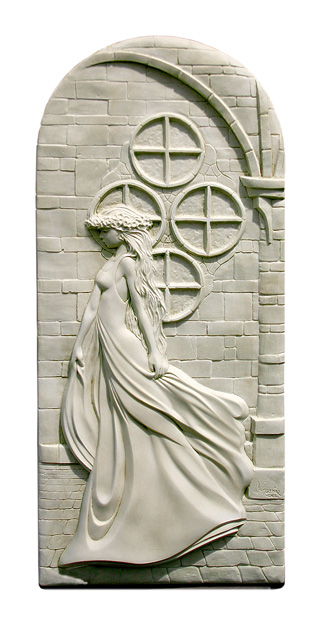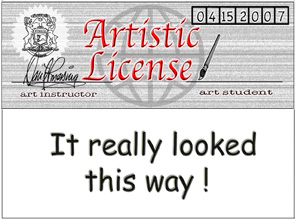ARTISTIC LICENSE
Every artist, sculptor, writer, photographer, poet, songwriter, or film director knows what “Artistic License” is, and when to use it.
 Let’s take an example of how it may be used. The human body is usually between 7.5-8 heads tall. Fashion art is illustrated at about 9-12 heads tall. I most always elongate my sculpture figures to 9 or 10 heads tall. Fashion art does it because clothing presents better tall vs short and squatty. I elongate a figure because it makes a better statement. Bottom line is this … “Artistic License” is used at the discretion of the artist, and we use it because we can, and we like it. It works, and is completely acceptable.
Let’s take an example of how it may be used. The human body is usually between 7.5-8 heads tall. Fashion art is illustrated at about 9-12 heads tall. I most always elongate my sculpture figures to 9 or 10 heads tall. Fashion art does it because clothing presents better tall vs short and squatty. I elongate a figure because it makes a better statement. Bottom line is this … “Artistic License” is used at the discretion of the artist, and we use it because we can, and we like it. It works, and is completely acceptable.
Now for purposes of this article, I am not discussing Abstracts, Impressionism, Cubism, Surrealism or, most especially, Dada, the majority of which I feel is better called “Crappa”. I am mostly interested in the art student working his/her butt off trying to get a perfect representation of their model.
I love to hyphenate the word “represent” to “re-present” when teaching my students, and have always made it a point that they are simply “re-presenting” their work in whatever medium they have selected.
Don’t feel you have to push any medium to a photographic finish. Let your watercolors look like watercolors. Maybe there is a little pencil line here and there or a wayward wash or a run-away drip. Likewise, don’t rub every stroke of your pastels away. Allow them to show and look like the medium. The same goes for every other medium; let your artwork look like the medium you are using, and remember, you are merely “re-presenting” it in that medium.
So, for the art student trying desperately to do a pencil portrait of Aunt Elsie … ease up on the eye bags and wrinkles under her chin and let her hair thicken up a little. Of all the times I have talked to students about artistic license, the most critical time to use it is when the photo, reference or the model from which you are working doesn’t look right. When that is the case, YOU HAVE TO FIX IT!
I once made these official-looking licenses and handed them out to all my adult students. On one side was the license, and on the other was a statement that read,”It really looked this way !” Then I instructed them that when something in the photo, reference or on your model doesn’t look right, you have two choices: 1) use the artistic license that I just gave you to fix it, or 2) turn the license over and tape to your finished picture, “It really looked this way !”
Maybe the brim of the hat is so crooked that it looks funny. Fix it! The one hand only shows three fingers and looks weird. Fix it! The flash on the camera made cousin Mary’s blouse a little too revealing. Fix it! (or not). The lighting made your pet portrait reference look a little cross-eyed. Fix it! Having taught art for 30 years, do you get the sense that I could go on like this forever? It seems simple, but most art students are so wrapped up in the throes of faithfully “re-presenting” the reference, they forget to use artistic license to perfect their finished product. There are so many things in life that can’t be fixed… you just have to learn to live with them. But with art you have the artistic license to change things for the better. So go ahead …. Fix it!!



I really enjoyed this article on artistic license. Although I prefer realistic art, and I have the ability to make my paintings look photographic, I prefer to leave them just short of that finish and let them be “painterly” upon a close inspection.